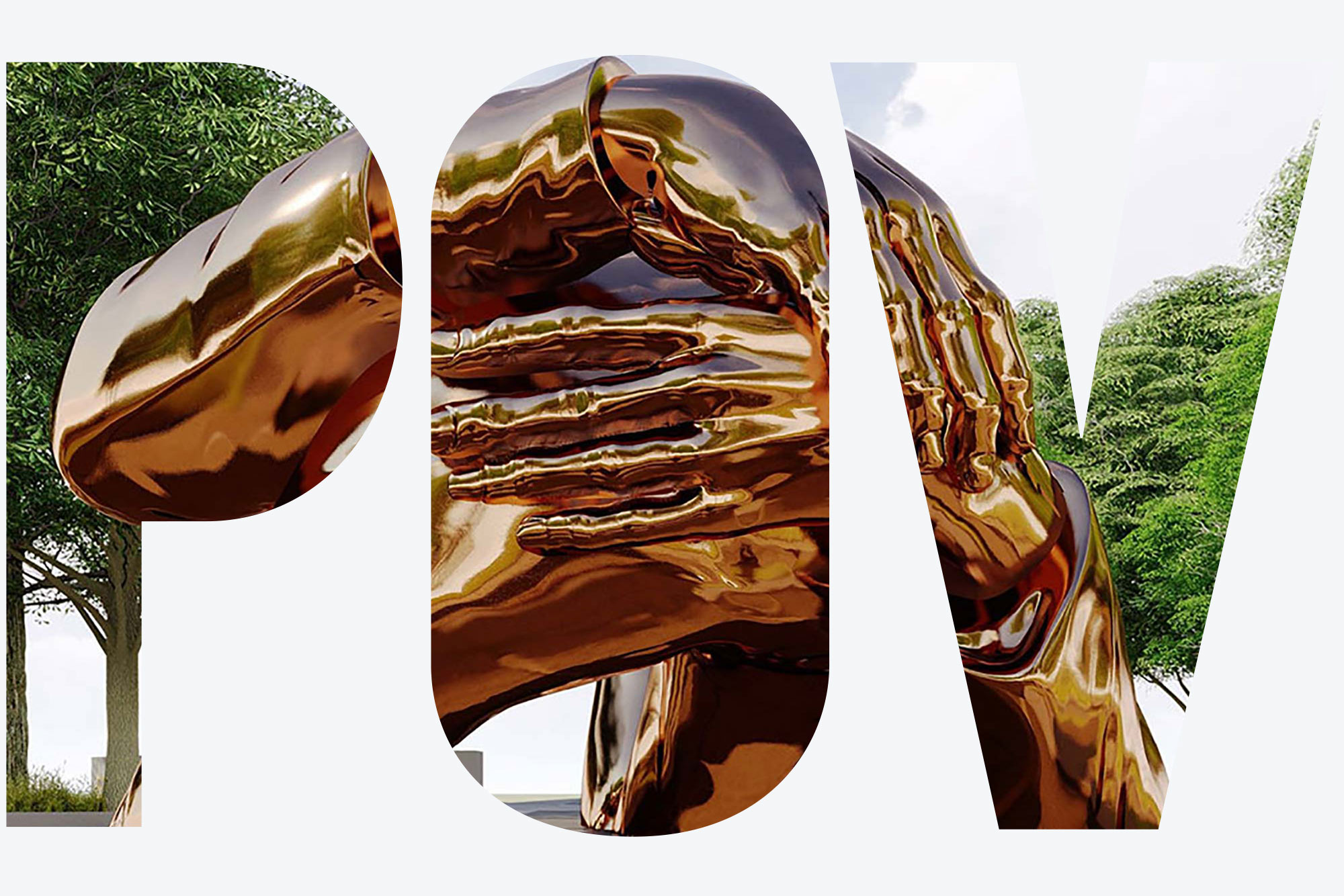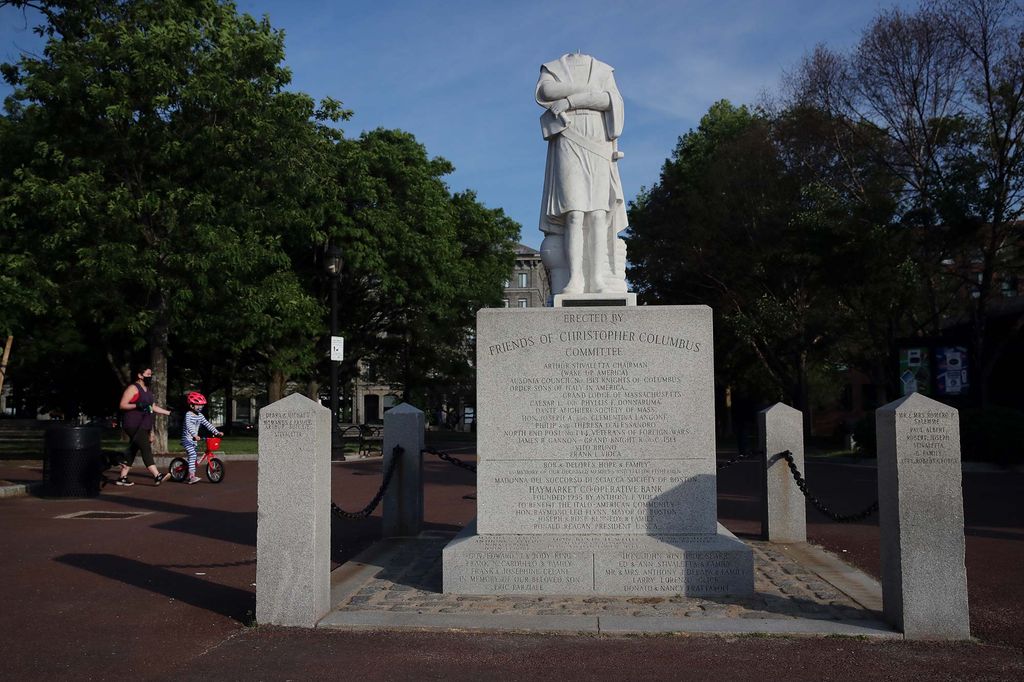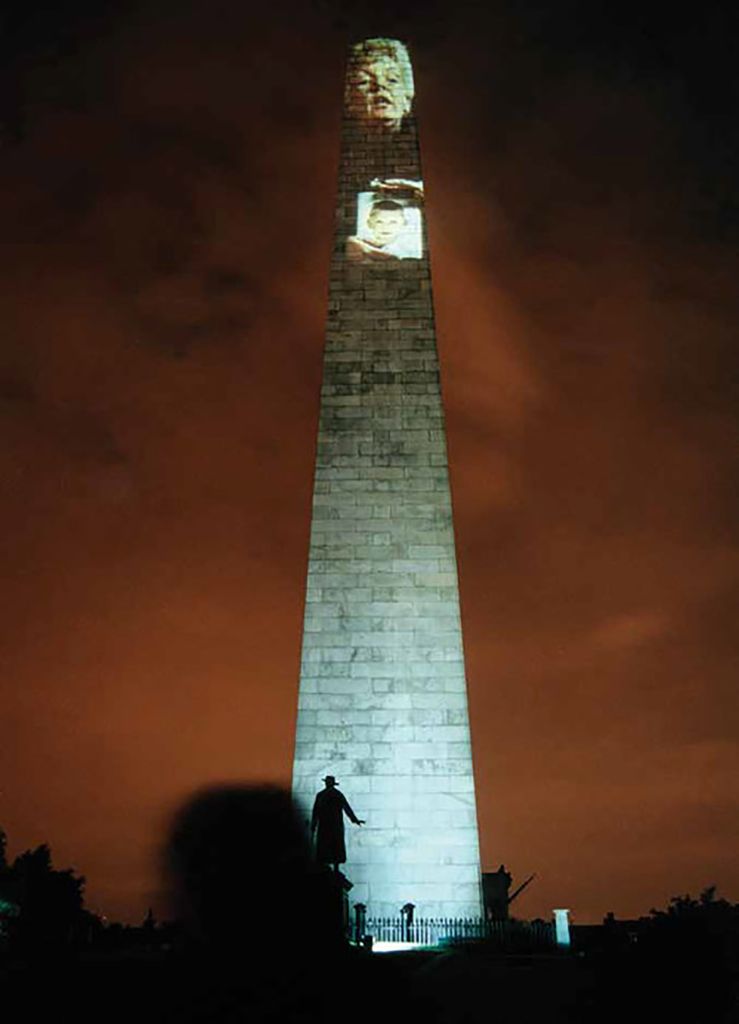POV: It’s Time to Change How We Choose Monuments and Statues

Artistic rendering of The Embrace by Hank Willis Thomas with MASS Design Group
POV: It’s Time to Change How We Choose Monuments and Statues
CFA dean: Mellon Foundation’s Monuments Project is an ambitious and much-needed commitment
Editor’s note, June 20, 2023: The Mellon Foundation has announced that the City of Boston will receive $3 million to spark dialogue around city monuments. Eight other municipalities will get similar grants.
With the exception of Seneca leader Red Jacket, the monuments and statues that I encountered in my childhood remembered the lives and deeds of white men. Their ubiquity made their uniformity easy to overlook and accept. History seemed to be everywhere—and it was almost exclusively white and male.
Earlier this month, the Andrew W. Mellon Foundation announced its Monument Projects, “a five-year, quarter-billion-dollar commitment” that the foundation says “will support efforts to recalibrate the assumed center of our national narratives to include those who have often been denied historical recognition.” The initiative aims to encourage a more complete telling of the story of the United States by including innovators, leaders, and changemakers regardless of skin complexion or gender identity.
Monuments are not wildflowers. They do not just sprout up. The monuments that we see are the results of elaborate processes and typically stand as reflections of community values. The recent effort to create a public memorial on the Boston Common to Coretta Scott King and Martin Luther King, Jr. (GRS’55, Hon.’59) began more than three years ago. That project—which will result in a 20-foot bronze memorial featuring “the act of embrace”—remains in progress.
Monuments are not wildflowers. They do not just sprout up.
Although The Embrace will signal Boston’s continuing efforts to move beyond the racial divisions of its past, innumerable other monuments elsewhere were created to erase the memory of indigenous settlements or stall the racial integration of cities. Most Confederate memorials, to white men, were built in response to the campaign for African American civil rights in the first half of the 20th century.
The Mellon Foundation initiative expands how communities might choose to narrate local, regional, and national histories. It provides the funding necessary to create new works that tell stories that should have been told decades ago. It also makes resources available for communities who seek alternate ways to engage existing monuments.
Boston has experience with expanded storytelling in relation to its monuments. Over three days in September 1998, artist Krzysztof Wodiczko projected a video across Bunker Hill Monument in which Boston residents shared their experiences with violence. A memorial to 18th-century war created an opportunity to reflect on contemporary “violence, freedom, and tyranny.”
With the support of the Mellon Foundation, it is possible that other monuments throughout Boston could be similarly engaged. A statue of Christopher Columbus, perhaps the often-vandalized one in the city’s North End, could be employed by present-day artists and storytellers to catalyze public conversations on both indigenous American and Italian-American contributions to the region in the face of prejudice and discrimination.


The vandalized statue of Christopher Columbus in Christopher Columbus Park in Boston’s North End (left). Krzysztof Wodiczko’s video project at Bunker Hill Monument in Charlestown, which took place on three consecutive nights in 1998 (right). Left photo courtesy of Craig F. Walker/the Boston Globe; right photo courtesy of Krzysztof Wodiczko
President Trump has warned that efforts to tell inclusive histories “seek to revise [American history], deprive it of any splendor, and mark it as inherently sinister.” However, a “history” that disregards fact and actively avoids accuracy is a fantasy, a myth.
George Washington, whose statue in the Public Garden is among the tallest in Boston, risked his life for American independence, and later decided not to free the women, men, and children over whom he asserted ownership until both he and his wife died. To tell the truth does not lessen the heroism of America’s first president—but it does help reveal the limitations that the “founding fathers” had in mind when they declared, “We hold these truths to be self-evident, that all men are created equal, that they are endowed by their Creator with certain unalienable Rights, that among these are Life, Liberty and the pursuit of Happiness.”
In addition to assisting communities “recalibrate” how they have heretofore presented history, Monument Projects will support efforts to spotlight historically significant achievements of women and men that have been overlooked or overshadowed. Imagine centering William Harvey Carney, the escaped slave who became a soldier and was awarded the Medal of Honor, in remembrances of the 54th Massachusetts Infantry, to the same extent as Robert Gould Shaw, the white commander of the all-Black regiment.
I am reminded of the monumental absences—the missing markers of Black achievement—in my childhood whenever I walk into Back Bay station. It is there that a larger-than-life statue of A. Philip Randolph, the union leader and key proponent for the 1963 March on Washington, has welcomed thousands of train passengers each and every day since 1988. His silent vigil is a daily reminder to the passersby, especially folks of color, that they too can make history. Monument Projects hopes to create that experience for everyone.
Comments & Discussion
Boston University moderates comments to facilitate an informed, substantive, civil conversation. Abusive, profane, self-promotional, misleading, incoherent or off-topic comments will be rejected. Moderators are staffed during regular business hours (EST) and can only accept comments written in English. Statistics or facts must include a citation or a link to the citation.